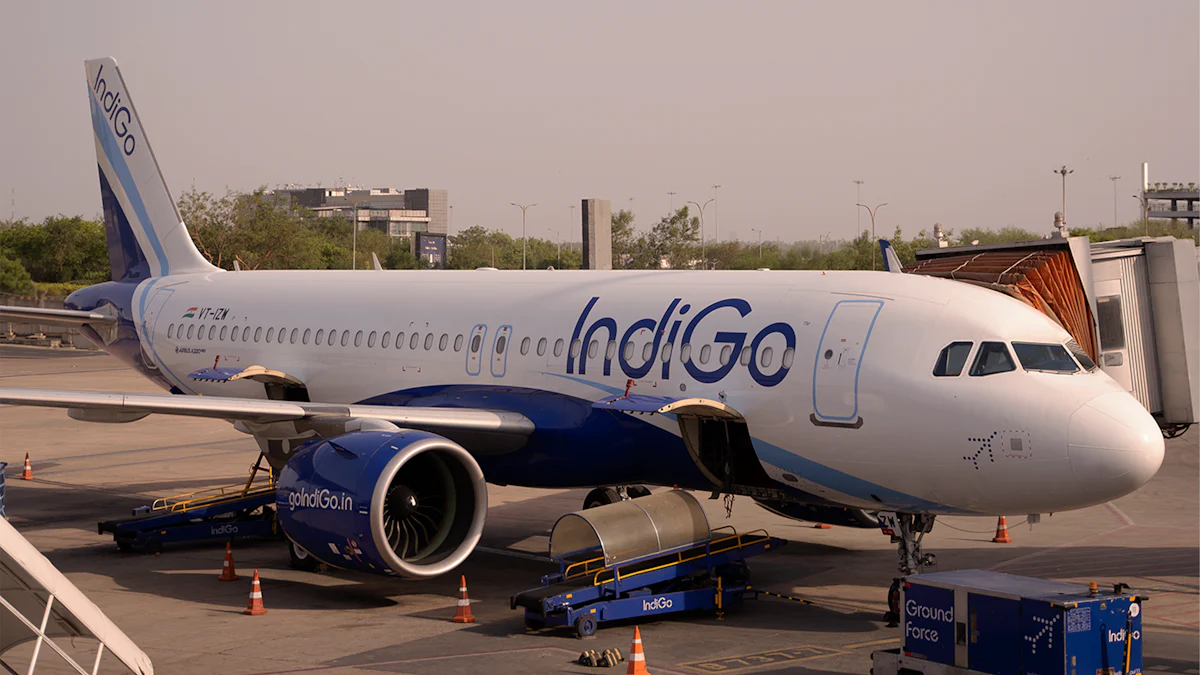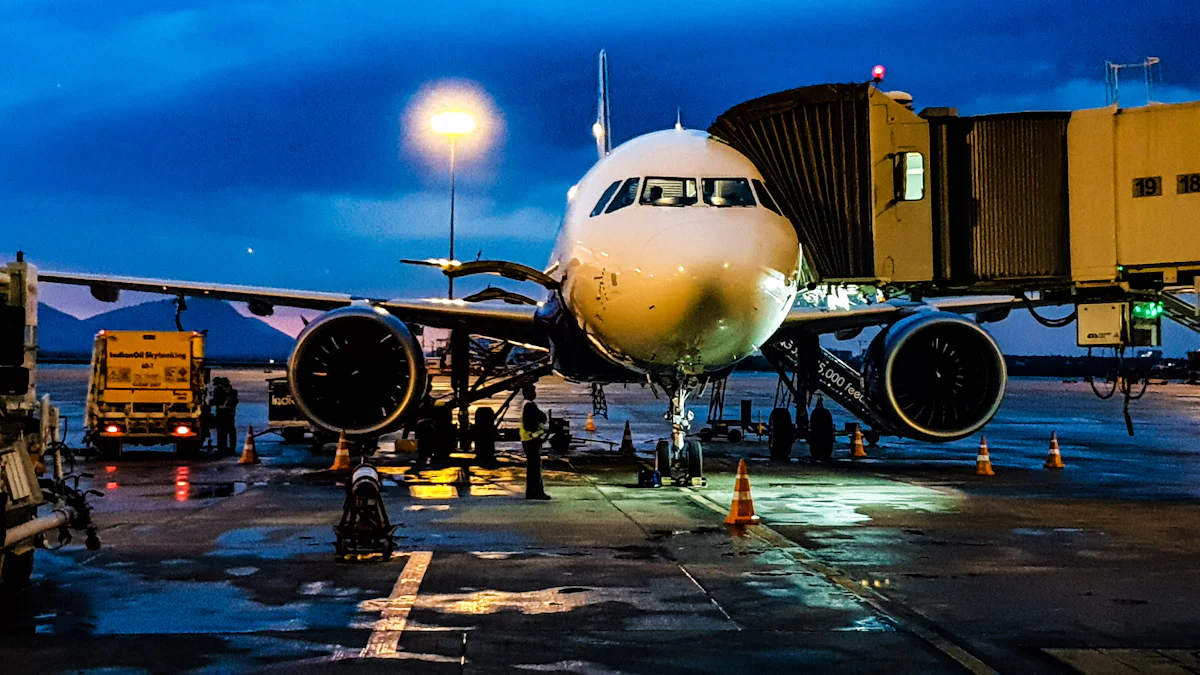Emerging Trends in India's Air Freight by 2025

India's air freight industry is on the brink of a transformative era by 2025. The air freight in India 2025 is projected to quadruple over the next two decades, with a compound annual growth rate of 7%. This growth trajectory highlights the emerging air freight trends that will shape the industry. Stakeholders, including logistics companies and exporters, stand to benefit significantly from these developments. The anticipated expansion will not only enhance India's position in global trade but also stimulate economic growth by creating jobs and improving supply chain efficiencies.
Projected Demand and Supply Dynamics in Air Freight
Growth Rates and Market Expansion by 2025
India's air freight industry is poised for substantial growth by 2025. Analysts predict a significant increase in both domestic and international cargo volumes. The expected growth rate ranges from 9% to 13% year-on-year, reflecting a robust expansion in the sector. This surge in demand is largely driven by key sectors such as e-commerce and pharmaceuticals. E-commerce, in particular, has revolutionized the logistics landscape, necessitating faster and more efficient delivery systems. Pharmaceuticals also contribute significantly, with the need for rapid transportation of medical supplies and vaccines.
The global air cargo market is projected to reach $481.2 billion by 2032, with a notable increase in cargo tonne-kilometers (CTKs). This growth underscores the importance of air freight in facilitating international trade and meeting the demands of a rapidly evolving market. As India aims to become one of the top five freight markets by 2025, the country's air freight industry will play a crucial role in achieving this goal.
Potential Challenges in Air Freight
Despite the promising growth prospects, India's air freight industry faces several challenges. Infrastructure limitations pose a significant hurdle. Many airports lack the necessary facilities to handle increased cargo volumes efficiently. This inadequacy can lead to delays and increased operational costs. To address these issues, investments in infrastructure development are essential.
Regulatory hurdles also present challenges for the air freight sector. Complex customs procedures and varying regulations across regions can impede the smooth flow of goods. Streamlining these processes and ensuring compliance with international standards will be vital for the industry's growth. By overcoming these obstacles, India can enhance its competitiveness in the global logistics arena and capitalize on emerging trends.
Innovations and Technological Advancements in Air Freight

Role of AI and Automation in 2025
The integration of AI and automation is revolutionizing the air freight industry. AI plays a crucial role in optimizing logistics and operations. It enhances predictive accuracy, allowing companies to anticipate demand and allocate resources efficiently. AI-powered systems analyze vast amounts of data to improve decision-making processes. This capability ensures that air freight operations remain competitive and responsive to market changes.
Automation in cargo handling streamlines processes and reduces human error. Automated systems manage tasks such as sorting, loading, and unloading cargo. These systems increase efficiency and speed, ensuring timely deliveries. The use of automation minimizes labor costs and enhances safety by reducing the need for manual intervention.
Drone Delivery and Its Impact on Air Freight
Drones are emerging as a transformative force in air freight. They offer a new dimension to delivery services, particularly in remote or hard-to-reach areas. The feasibility of drone delivery depends on technological advancements and regulatory considerations. Authorities must establish guidelines to ensure safe and efficient drone operations.
The potential benefits of drones in air freight are significant. They provide faster delivery times and reduce transportation costs. Drones can access areas that traditional vehicles cannot, expanding the reach of logistics networks. However, limitations exist. Drones have payload restrictions and require robust infrastructure for charging and maintenance. Despite these challenges, drones represent a promising future for air freight.
Sustainability Initiatives in Air Freight

Adoption of Biofuels in Air Freight
Current developments and future prospects
The air freight industry is witnessing a significant shift towards sustainable practices, with biofuels playing a pivotal role. Airlines and freight carriers are increasingly investing in biofuels as a cleaner alternative to traditional jet fuels. This transition is part of broader sustainable aviation initiatives aimed at reducing the carbon footprint of air cargo operations. Biofuels, derived from renewable sources, offer a promising solution to the environmental challenges faced by the industry.
Current developments indicate a growing commitment to biofuel adoption. Major airlines have begun integrating biofuels into their operations, setting a precedent for others to follow. The future prospects for biofuels in air freight look promising, with ongoing research and development efforts focused on enhancing their efficiency and scalability. As technology advances, the cost of biofuels is expected to decrease, making them a viable option for widespread use in the industry.
Impact on carbon emissions
The adoption of biofuels has a profound impact on carbon emissions. By replacing conventional fuels with biofuels, airlines can significantly reduce their greenhouse gas emissions. This reduction aligns with global efforts to combat climate change and promotes a more sustainable future for air freight. Biofuels contribute to sustainable aviation initiatives by offering a cleaner energy source that minimizes the environmental impact of cargo transportation.
Carbon Offset Programs in Air Freight
Initiatives by major airlines
In addition to biofuels, carbon offset programs have emerged as a key component of sustainable aviation initiatives. Major airlines are actively participating in these programs to mitigate their carbon emissions. By investing in projects that reduce or capture carbon dioxide, airlines can offset the emissions generated by their operations. These initiatives demonstrate a commitment to eco-friendly operational strategies and highlight the industry's dedication to sustainability.
Delta Airlines, for example, has partnered with Air BP and Airbus to power delivery flights with biofuels and carbon offsets. This collaboration marks a significant milestone in Delta's sustainability journey, showcasing the potential of combining biofuels with carbon offset programs to achieve carbon-neutral flights. Such initiatives set a benchmark for other airlines to follow, encouraging the adoption of similar practices across the industry.
Long-term environmental benefits
The long-term environmental benefits of carbon offset programs are substantial. By supporting projects that promote reforestation, renewable energy, and energy efficiency, airlines contribute to the reduction of global carbon emissions. These efforts not only help mitigate the impact of air freight on the environment but also foster a culture of sustainability within the industry. As more airlines embrace carbon offset programs, the cumulative effect will lead to a greener and more sustainable future for air cargo.
Cybersecurity and Data Transparency Improvements in Air Freight
Enhancing Data Security in Air Freight
The air freight industry faces increasing challenges in maintaining data security. Emerging threats, such as cyber-attacks and data breaches, pose significant risks to the integrity of cargo operations. Companies must adopt robust cybersecurity strategies to protect sensitive information. These strategies include implementing advanced encryption methods and regularly updating security protocols. By doing so, they can safeguard their systems against unauthorized access and ensure the confidentiality of their data.
Secure data handling remains crucial for maintaining trust among stakeholders. Companies must prioritize the protection of customer information and operational data. This involves training employees on best practices for data security and conducting regular audits to identify potential vulnerabilities. By enhancing their cybersecurity measures, air freight companies can prevent data breaches and maintain the integrity of their operations.
Transparency in Supply Chain with JUSDA
JUSDA plays a pivotal role in enhancing transparency within the supply chain. The company utilizes cutting-edge technologies to provide real-time tracking and visibility of cargo movements. These technologies include IoT devices and cloud-based platforms that enable enhanced cargo tracking. By leveraging these tools, JUSDA ensures that stakeholders have access to accurate and up-to-date information about their shipments.
The benefits of transparency in the supply chain are manifold. Stakeholders gain confidence in the reliability of their logistics operations, leading to improved decision-making and reduced operational risks. Enhanced cargo tracking allows companies to optimize their supply chain strategies, resulting in increased efficiency and cost savings. By providing comprehensive tracking solutions, JUSDA empowers businesses to achieve greater transparency and accountability in their operations.
By 2025, air freight in India 2025 will undergo significant transformations. Key market trends include the integration of AI and automation, which will enhance real-time visibility and efficiency. The rise of e-commerce will drive demand for faster delivery solutions, including last-mile delivery innovations. Stakeholders must adapt to these changes to remain competitive. The potential for growth and innovation in the air freight sector is immense, with opportunities to improve delivery systems and embrace sustainable practices. As India positions itself as a global leader, the industry will continue to evolve, offering promising prospects for the future.
See Also
Exploring 5 Key Trends Shaping Supply Chain Efficiency
Discovering Innovations in Sea Freight Logistics for 2024
Understanding Current Trends in Logistics Risk Management
Transforming Logistics with AI: The Future is Here
Enhancing Future Logistics Through Digital Technology Innovations
